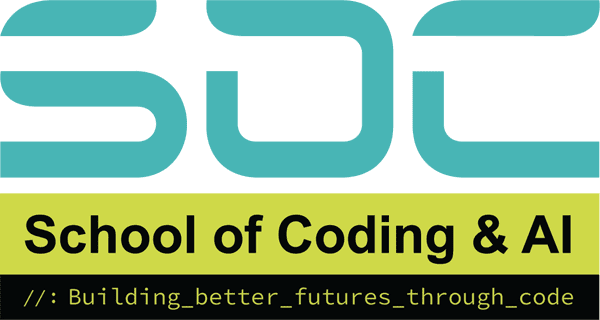Artificial intelligence (AI) is rapidly changing the educational landscape, making learning more personal, efficient, and accessible. From intelligent teaching systems to AI-powered administrative tools, AI’s involvement in education is expanding rapidly. But why is AI importance in educational field? In this article, we will look at seven convincing reasons why AI is a game changer in education and how it is influencing the future of learning.
Why is AI importance in Educational Field? 7 Reasons Why It’s Essential in Learning
1. Personalised learning for each student
One of the most significant advantages of AI in education is its capacity to tailor learning. Traditional teaching approaches take a one-size-fits-all approach, which might leave some pupils behind while others advance. AI-powered systems assess students’ learning styles, strengths, and shortcomings to provide personalised content and adaptive learning experiences.
Example:
Platforms such as Carnegie Learning and Squirrel AI use AI algorithms to generate personalised lesson plans, ensuring that students receive the appropriate level of challenge and support.
2. Intelligent tutoring with instant feedback
AI-powered tutoring systems can offer students 24-hour help, reducing the need for human tutors at all times. These systems respond to enquiries, explain concepts, and provide quick feedback, making learning more participatory and engaging.
Key Statistics:
According to an eSchool News survey, students who used AI-powered tutors improved their learning outcomes by 30% compared to those who only used traditional techniques.
3. Improved teacher support and automated grading
Teachers spend numerous hours grading homework and developing lesson plans. AI can automate these duties, giving instructors more time to focus on student engagement and novel teaching tactics.
Example:
AI-powered platforms like Gradescope and Turnitin grade essays and assignments, delivering quick feedback and lowering instructor workload.
4. Addressing Learning Gaps and Special Needs Education
AI tools can discover gaps in a student’s knowledge and provide tailored interventions. This is especially useful for kids with learning impairments or who need extra assistance.
Example:
AI-powered voice recognition and text-to-speech programs can help dyslexic pupils improve their reading and writing abilities.
5. AI-Powered Administrative Efficiency
Educational institutions can use AI’s automated capabilities to streamline administrative activities such as scheduling, enrolling, and student performance tracking. This results in better resource allocation and higher overall efficiency.
Example:
According to McKinsey research, AI can automate administrative duties for instructors, saving up to 13 hours each week.
6. Boosting student engagement and motivation
AI-powered gamification and interactive learning platforms make learning enjoyable and engaging. Students are kept engaged in their studies by using AI-powered quizzes, simulations, and virtual reality.
Example:
Duolingo, an AI-powered language learning program, uses gamification approaches to engage learners and adjust lessons to their competence levels.
7. Making Education Accessible to All
AI is breaking down barriers to education by enabling remote study and translating instructional content into different languages. Students in remote or poor locations can now receive a high-quality education via AI-powered platforms.
Key Statistics:
According to UNESCO, AI-powered EdTech solutions have enabled learning for over 100 million pupils in underdeveloped nations.
Conclusion
AI is more than just a futuristic concept; it is already revolutionising education. From tailored learning and intelligent tutoring to enhanced teacher assistance and accessibility, AI’s role in education is critical. As technology advances, AI will play an increasingly important role in creating the future of education, ensuring that every student has the opportunity to excel.
Are you prepared to embrace AI in education? The School of Coding & AI provides cutting-edge courses that provide students and educators with the knowledge and skills required to use AI in learning. Explore our programmes today!
FAQs
Artificial intelligence (AI) is poised to be a disruptive force in the future of education, altering how students interact with information, teachers offer teaching, and institutions manage learning environments. The true strength of AI is its ability to tailor, automate, and improve the learning process, resulting in more efficient, inclusive, and effective educational systems.
Personalised Learning Journeys:
In the future, AI will provide hyper-personalised learning experiences that are tailored to each student's speed, learning style, and academic strengths or limitations. Algorithms will assess performance data to recommend personalised learning paths, bespoke exercises, and real-time feedback, allowing every learner to grow comfortably, regardless of their starting point.
Intelligent Tutoring Systems (ITS):
Virtual tutors powered by artificial intelligence will supplement classroom education, giving academic support around the clock. These algorithms can teach complicated topics, monitor student comprehension, and discover knowledge gaps without tiring, which traditional human resources cannot match.
Automating Administrative Tasks:
Teachers generally devote a large amount of time to grading, attendance, and lesson planning. AI will automate these duties using natural language processing and data analytics, freeing up instructors' time to focus on meaningful student engagement and curriculum creation.
Predictive Analytics for Early Intervention:
AI can analyse student data over time to identify individuals at risk of falling behind or dropping out. Early alerts generated by AI technologies enable schools and institutions to implement appropriate interventions, assisting before problems grow.
Inclusive and Accessible Learning:
AI-powered solutions such as real-time translation, text-to-speech, and captioning services will improve accessibility for students who are disabled or do not speak English. This ensures that educational content is inclusive, reaching learners of various abilities and languages.
AI supports lifelong learning and skill development:
By selecting relevant micro-courses, following industry trends, and aligning learners' education with growing employment markets. It will also enable adaptive learning platforms for adult learners, making lifelong education a viable option.
In summary, AI will not replace educators, but rather serve as a powerful ally, enhancing their influence, removing barriers, and cultivating a more student-centered educational ecosystem.
In the United Kingdom, artificial intelligence is already altering education, from basic schools to universities and vocational training institutes. Government efforts, private EdTech businesses, and forward-thinking institutions are now using AI to improve learning results, operational efficiency, and student engagement.
- AI in Classroom Teaching: Schools in the UK are integrating AI-powered platforms like Century Tech, which integrates learning science, cognitive neuroscience, and artificial intelligence to customise learning and minimise teacher workloads. These tools measure student answers in real time and tailor material delivery to individual learning profiles.
- Predictive Analytics in Higher Education: UK universities utilise AI to track student attendance, monitor engagement with digital learning materials, and anticipate academic success. This enables instructors and academic advisors to intervene early with targeted support. The University of Essex, for example, uses predictive algorithms to increase student retention and success rates.
- Chatbots and Virtual Assistants: AI-powered chatbots are being used in schools and colleges to answer common student questions concerning timetables, deadlines, and course content. These virtual assistants give immediate responses, reducing administrative stress on staff and increasing student happiness.
- Intelligent Marking Systems: AI technologies are utilised to grade essays, quizzes, and long-form replies, particularly in disciplines like English and History. While human moderation is still required, these tools considerably cut marking time and maintain consistency in grading.
- AI for SEND (Special Educational Needs and Disabilities): AI technologies are very useful for students with special needs. Speech-to-text apps, reading comprehension aides, and emotion detection technologies enable teachers to tailor their approaches to the needs of individual students. Schools in locations such as Birmingham and Manchester are actively implementing such ideas.
- Curriculum Design and EdTech Startups: The UK has a robust EdTech ecosystem. Startups such as Sparx Learning, Kognity, and Zzish are using AI to assist instructors in developing courses based on student data and national benchmarks, guaranteeing alignment with learning objectives and maximising student accomplishment.
- National Policies and Funding Support: The UK government understands the importance of AI in education and supports its integration through initiatives such as the EdTech Strategy and AI Sector Deal. Funding is focused towards AI research, teacher training on digital skills and collaboration with technology companies.
In conclusion, AI in UK education is not a pipe dream; it is currently a practical, developing reality. By combining human knowledge with sophisticated systems, the UK is developing a forward-thinking educational approach that better serves both students and instructors.







